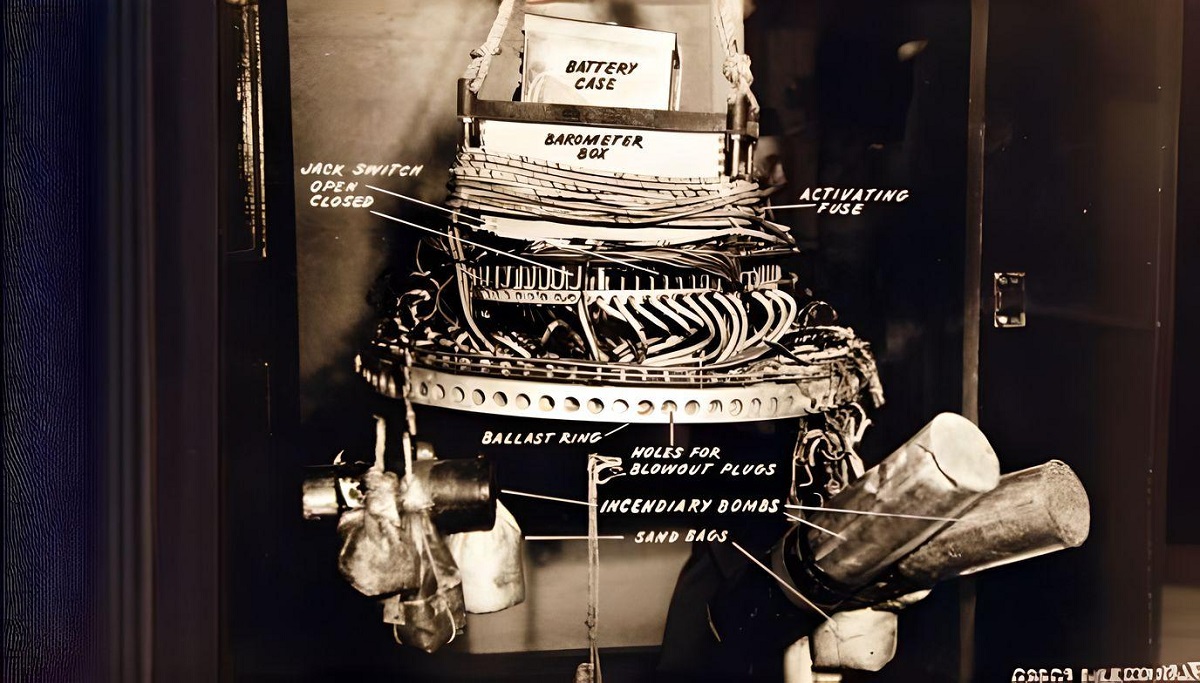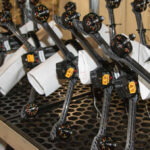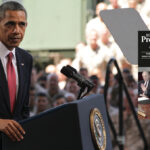
In November 1944, Japan launched thousands of balloons carrying incendiary bombs across the Pacific, aiming to set fire to American forests and divert resources from the war effort. While the campaign caused minimal damage and few casualties, it highlights the vulnerability of the U.S. homeland to attack. To discuss lessons from this historical event, the current state of homeland defense, and how we might better prepare for the future, George Schwartz and Bert Tussing sat down with host Darrell Driver. Their conversation emphasizes the need for a whole-of-nation approach to preparedness and the importance of collaboration between government, military, and private sectors.
There are what we refer to as seams of ambiguity that doesn’t clearly define itself as either a defense or a law enforcement issue, and our adversaries have discovered the seam and they’re playing along that seam. And that’s what thrusts us into the gray areas that we’ve been talking about for for at least two decades now.
Podcast: Download
George Schwartz, Ed.D., is a retired U.S. Army brigadier general and currently serves on the faculty of Immaculata University. He is a visiting professor for Homeland Defense & Security Issues at the U.S. Army War College’s Center for Strategic Leadership (CSL).
Bert Tussing is Director of the Homeland Defense and Security Issues Group at the U.S. Army War College’s Center for Strategic Leadership (CSL). He joined CSL in October 1999, following nearly 25 years in the United States Marine Corps. He is a distinguished graduate of both the Marine Corps Command and Staff College and the Naval War College and holds master’s degrees in National Security Strategy and Military Strategic Studies. In May of 2014 he was awarded an honorary doctorate in Humane Letters by Northwestern State University in recognition of his work in Homeland Security, Homeland Defense and Educational initiatives surrounding those topics.
Darrell Driver is Professor in the Department of Military, Strategy, Planning and Operations at the U.S. Army War College.
The views expressed in this presentation are those of the speakers and do not necessarily reflect those of the U.S. Army War College, U.S. Army, or Department of Defense.
Photo Description: Japanese balloons, Fu-Go, found in California with weight release mechanism shown. The incendiary bombs are in same positions as originally found; the sand bags are suspended from the proper plugs not in the same order as found. Three incendiaries and six sand bags are shown. This picture is marked with explanations showing the “Brain Center” of the balloons. It should be borne in mind that after the balloon was released from Japan, it rose to about 30,000 feet, then it carried westward by swift currents which prevailed at high altitudes during Winter 1945. It was necessary for the balloons to hold these altitudes for more than three four days, the time required to make the trip to North America. This device was designed just for that purpose, and, in addition, dropped its bombs at the end of the journey, setting off on a self-destroying mechanism.
Photo Credit: U.S. Army Air Force (Air Force) photograph, now in the collections of the National Archives via Wikimedia Commons





At approximately the 27:00 or so point in this podcast, BG (ret.) Swartz uses the term and discusses a little bit the idea of “cognitive defense” (and, therefore, the idea of “cognitive attack?”); wherein, he notes that foreign adversaries are attacking us now, using such things as social media to create divisions, undermine American’s will and undermine our trust in institutions like our government, our free press, etc. (Thus, if we go to war, he considers that we may not be able to field the same degree of unified response that we were able to do during World War II.)
However, as to these such matters, should we not be looking — less to problems and activities relating to foreign adversaries — and more to problems that we/ourselves have created here at home? (Thus, problems which [a] WE CREATED and which, accordingly, [b] our foreign adversaries are simply “piggybacking” on?) Example:
“Overall, analysis has shown that globalization is properly considered a homeland security concern, as it disturbs existing economic and social patterns, leading to physical and economic damage to communities, feelings of disenchantment, loss of faith in government, and social unrest. As a result, lawmakers and policy experts should consider the homeland security ramifications of globalizing policies that may seem to be purely economic or political. The resulting economic inequality leads to political instability as increasing numbers of citizens have lost faith that the system is acting in their best interests. Such loss of faith is a direct homeland security concern, as citizens will not fight to protect what they perceive as an unjust system. Indeed, it is an existential threat to the government itself. A final consequence of the grievances that have arisen from unchecked globalization in the United States is that support for leaders espousing populist ideas has grown significantly. The us/them dynamic and homogenous population ideas inherent in populism and manifested on January 6 are problematic for homeland security on several levels.” (See the item “Globalization and Its Effects on Homeland Security,” by Christopher Thomas in the (Naval Post-Graduate School?) journal “Homeland Security Affairs.”
Walter Russell Mead’s take on these self-inflicted injuries is as follows:
“In this new world disorder, the power of identity politics can no longer be denied. Western elites believed that in the twenty-first century, cosmopolitanism and globalism would triumph over atavism and tribal loyalties. They failed to understand the deep roots of identity politics in the human psyche and the necessity for those roots to find political expression in both foreign and domestic policy arenas. And they failed to understand that the very forces of economic and social development that cosmopolitanism and globalization fostered would generate turbulence and eventually resistance, as ‘Gemeinschaft’ (community) fought back against the onrushing ‘Gesellschaft’ (market society), in the classic terms sociologists favored a century ago.” (See the Mar-Apr 2017 edition of “Foreign Affairs” and, therein, the article by Walter Russell Mead entitled “The Jacksonian Revolt: American Populism and the Liberal Order.”)
Question:
a. If the problem is really an internal one — and, specifically, related more to our embrace of such things as globalization (and, thus, is self-inflicted wound; wherein, foreign adversaries are simply “piggybacking.”),
b. Then, as to this such understanding, how do such things as Homeland Security, and Homeland Defense, need to become organized, ordered, oriented, etc.; this, so as to deal with this — properly understood as internal/self-inflicted — problem?
From the introduction to our podcast above:
“Their conversation emphasizes the need for a whole-of-nation approach to preparedness and the importance of collaboration between government, military, and private sectors.”
Question:
But if the government, the military and the private sectors are considered to be the problem by many (for example, because, post-the Old Cold War, these entities were seen to have prioritized the wants, needs and desires of market society; these, over the wants, needs and desires of nations and/or of other communities), then, in circumstances such as these, how can whole-of-nation efforts — with such marginalized nations and/or marginalized communities — hope to be undertaken? (Stated another way, can you actually do homeland security and/or homeland defense; this, with just the government, the military and the private sector?)
Related question:
Back in 1941, did we have the same type of problem that I describe in my comment immediately above; wherein, today, the government, the military and the private sector are seen to have prioritized the wants, needs and desires of market society, these, over the wants, needs and desires of nations and/or of other communities?
If not, then might THIS be the reason why a whole-of-nation approach (a) was so easy/was easier to achieve back then but (b) is so hard/nearly impossible to achieve today?
Returning to the issue of “cognitive defense” (and, thus, the idea of “cognitive attack” by foreign adversaries), which is raised by BG (ret.) Schwartz at about the 27:00 point in this podcast, a question:
With the apparent election of Donald Trump as our President once again, have our adversaries, such as Russia, China, etc., lost much of their ability to — and, in truth, lost much of their need to — cognitively attack us?
This, given that, in many ways (for example, ideas relating to sovereignty; the right to national political, economic, social and/or value uniqueness; ideas relating to gender, racial, etc., discrimination, migrants/immigrants, etc.) Americans now seem to be much more closely aligned with the ideas of Russia, China, etc. — and less aligned with traditional Western ideas — than at any other time in our recent history? (Have I got this wrong somehow, or at least partially wrong somehow?)
Stated another way, if Russia, China, etc. — with the apparent election of President Trump once again — have had their ideas on these such matters now formally adopted by most of the American people also — then, in circumstances such as these, (a) why would Russia, China, etc., want to mess this up/want to shoot themselves in their own foot; this, by (b) cognitively attacking us. (If they can even do this now; this, given these such “we largely agree with each other on these such matters” circumstances?)